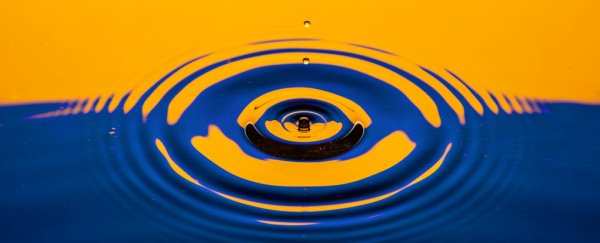Water is a very strange thing. In our everyday experience, when liquid water drops below 0 °C (32 °F or 273.15 Kelvin), it freezes into a solid form, becoming ice. But ice, it turns out, is rather weird too.
Most of the time, ice seems to be the same frozen solid, no matter where you look. Scientists know differently.
Depending on how liquid water is manipulated, its transformation into ice, called crystallisation, can play out in all sorts of different ways, and in some circumstances, it can take extreme temperatures far colder than 0 °C before this transition occurs.
This is the realm of supercooling – scientific experimentation that lowers the temperature of liquid water until it's far beyond its ordinary freezing point, yet still keeping its liquid form. There are various ways of doing this – with selective applications of temperature and pressure – creating the myriad of exotic ice forms that have been found to exist.
In a new study, however, scientists wanted to examine water at extremely cold temperatures before crystallisation occurred, while it was still in its liquid state.
The surprising thing they found is that, in the right circumstances, supercooled water can actually be two liquids in one.
"We showed that liquid water at extremely cold temperatures is not only relatively stable, it exists in two structural motifs," says chemical physicist Greg Kimmel from the US Department of Energy's Pacific Northwest National Laboratory (PNNL).
"The findings explain a long-standing controversy over whether or not deeply supercooled water always crystallizes before it can equilibrate. The answer is: no."
During experiments in the lab, Kimmel's team fired a laser at a thin film of ice, creating momentary bursts of thawed, supercooled water at extremely cold temperatures – before it swiftly froze over again, like the kingdom of Arendelle in the midst of a royal crisis.
In these incredibly short windows, each lasting only nanoseconds, the researchers observed liquid water existing in two distinct states – a higher-density form sitting alongside a lower-density structure.
"Water relaxed from its initial configuration to a steady-state configuration before the onset of crystallization for the experimentally accessible temperature range," the authors write in their paper.
"These results provided support for the hypothesis that supercooled water at low pressure can be described as a mixture of two, structurally distinct components from 135 to 245 K [–138.15 °C/–216.67 °F to –28.15 °C/–18.67 °F]."
It's not the first time such a duality has been found in water. Previous experiments by other scientists have also revealed a combination of structures in water's liquid state – but this appears to be the first time such a hybrid has been observed at such low temperatures.
The reason liquid water can be supercooled at all – contrary to the ice cubes in your freezer – is because in specific circumstances (involving the absence of dust or other small particles), it's possible to deprive liquid water of the tiny seeds necessary to help kickstart the process of crystallisation.
In nature, liquid water in the atmosphere can persist in its liquid state, until it collides with such a seed. A single snowflake is all it takes to trigger the metamorphosis.
"Liquid water in the upper atmosphere is deeply cooled," says PNNL chemical physicist Bruce Kay.
"When it encounters a snowflake it rapidly freezes, and then in the right conditions, falls to Earth. It's really the only time most people will experience the effects of supercooled water."
Until such time, though, liquid water, chilled well south of its conventional freezing point, will retain its fluid properties, as long as it's kept deprived of snowflakes or analogous crystallisation triggers.
Experimentally, we now know what isolated liquid water looks like when it gets cold enough in such circumstances.
For a fleeting instant, it's composed of a union of these high-density and lower-density structures, with the proportion of the high-density form in the mix seeming to decrease as the temperature drops from 245 K.
In other words, for a nanosecond or two, at least, water seems to be two liquids at once.
"When it's that cold, you maybe only have a 1,000,000th of a second before it freezes," Kimmel told Inverse.
"But for the water molecules dancing around, that's long enough for them to say, 'I've gotten the structure I want. I'm not going to change'."
The findings are reported in Science.
